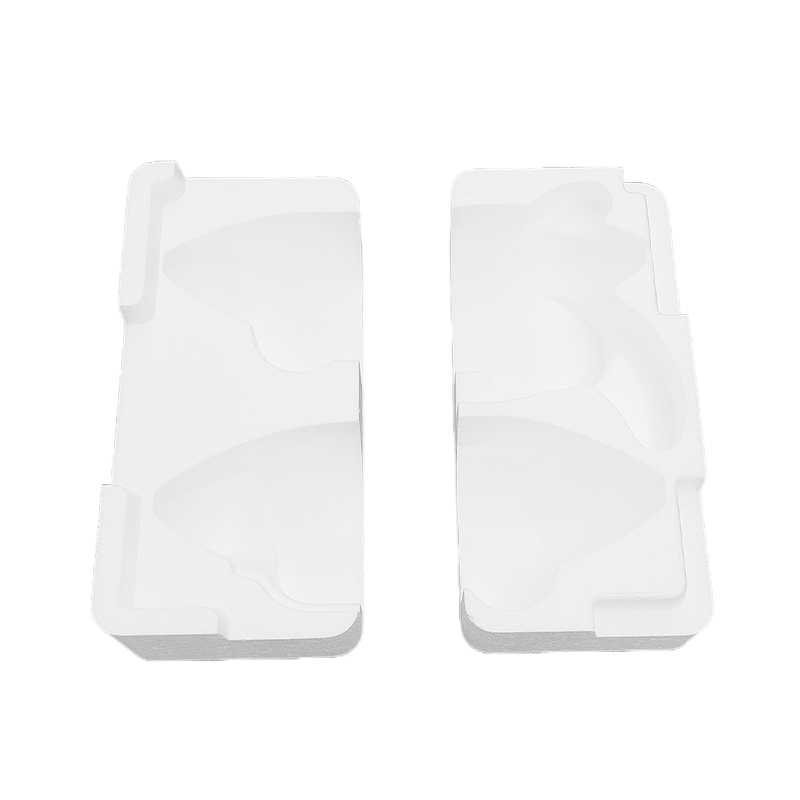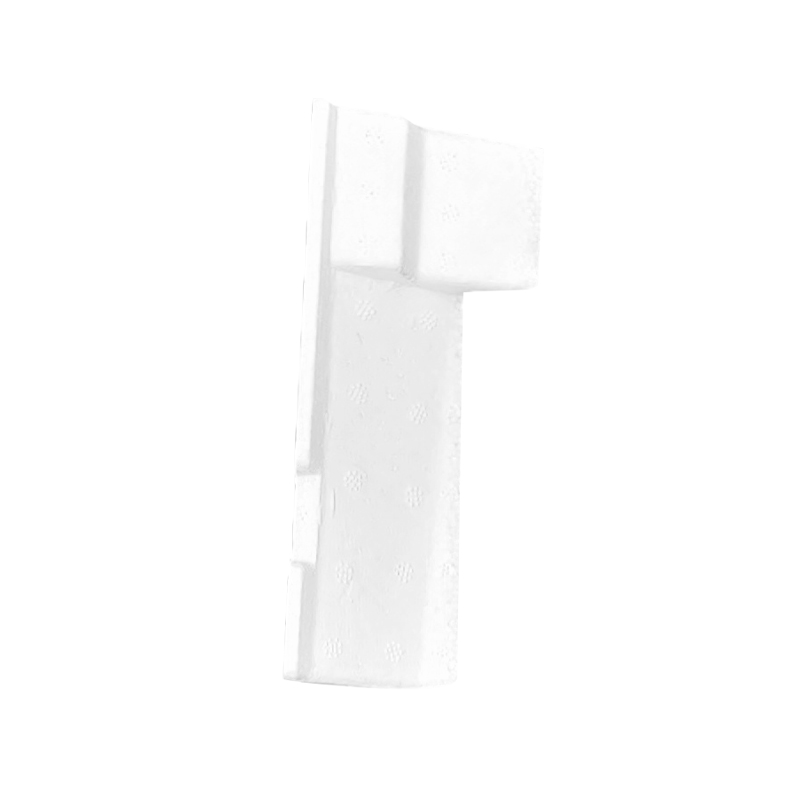Are wires always scratched during transportation? How can wires EPS packaging mitigate this friction crisis with its softness and elasticity?
Release Time : 2025-10-10
During the production, transportation, and storage of wires and cables, a seemingly minor but far-reaching problem has long plagued companies: scratches and deformations on the wire surface caused by friction and compression. These damages not only affect the product's appearance but can also compromise the integrity of the insulation, reduce electrical safety, and even lead to customer complaints and returns. Traditional wrapping, bundling, or simple cardboard packaging are ineffective in handling the complex environment of transportation. wires EPS packaging , with its unique "soft and elastic" structure, is becoming an innovative solution to this friction crisis.
1. The Pain of Scratches: Why Does Traditional Packaging Fail?
During logistics, wires are often subjected to physical impacts such as stacking, bumps, and collisions during handling. Ordinary packaging materials such as plastic film, woven bags, or corrugated cardboard lack cushioning properties. Direct contact between wires and external objects can easily cause surface scratches, indentations, and even insulation damage. Especially during long-distance transportation or multiple transfers, minor friction accumulates, ultimately causing irreversible damage. Furthermore, loose wires are prone to tangling, which not only increases on-site sorting time but can also damage the internal conductors from forceful pulling. Traditional packaging is already lacking in terms of protection, organization, and reusability.
2. The "Softness and Elasticity" of EPS Packaging: A Physical Protection that Combines Strength and Flexibility
EPS (expandable polystyrene) is a lightweight, highly elastic foam material whose core advantage lies in its "soft exterior and tough interior." When used for wire packaging, EPS is typically molded into trays, covers, or troughs that match the shape of wire reels or coils, creating a customized three-dimensional cushioning space. This soft and elastic foam material conforms closely to the surface of the wires, absorbing energy through deformation during impact and effectively buffering vibration and pressure. Even during multi-layer transportation, EPS packaging prevents direct compression between layers of wires, preventing insulation deformation. More importantly, its smooth and delicate surface resists scratching the wires' surface, unlike rougher materials that can cause friction, truly achieving a "soft-overcoming-hard" physical protection.
3. Trough Design: From "Tangled" to "Organized Storage"
In addition to being scratch-resistant and wear-resistant, EPS packaging also excels at organizing and managing wires. Many EPS packaging utilizes a trough or coil design, with each groove specifically designed for a single wire, separating and securing multiple wires and preventing entanglement. This "one trough, one wire" layout keeps wires neatly organized during transport and storage, eliminating the need for tangling when accessing them, significantly improving work efficiency. It's particularly suitable for storing multiple wires of varying specifications at once, such as wiring harnesses for distribution boxes, pre-buried wiring kits for buildings, and equipment installation kits. Users can easily access wires in order upon opening the package, significantly enhancing the convenience and professionalism of on-site construction. For manufacturers, this also helps enhance the standardization of product delivery and brand image.
4. Customization and Environmental Potential: Balancing Functionality and Sustainability
EPS packaging can be highly customized to accommodate various wire diameters, lengths, and reel sizes, accommodating a wide range of product specifications. Its lightweight design also effectively reduces overall packaging weight and shipping costs. Although EPS materials once faced environmental controversy, modern EPS packaging is moving towards recyclability and reusability. Many companies have established recycling programs to repurpose used EPS into pellets, reducing resource waste. Furthermore, its excellent protective properties reduce product scrapping due to damaged wires, further enhancing its environmental value.
5. Wide Application: Comprehensive Protection from Industrial to Consumer Use
Wire EPS packaging is widely used in power engineering, rail transit, construction, home appliance manufacturing, and new energy applications. Whether it's high-voltage cables and control cables, or wiring for household appliances and charging station connectors, EPS packaging provides reliable protection. Especially in export trade, facing long-distance ocean transportation and complex road conditions, EPS packaging has become a standard solution for ensuring the quality of wires.
Frequent scratches on wires during transportation aren't unavoidable "wear," but rather a reflection of outdated packaging solutions. wires EPS packaging, with its unique soft and flexible material and scientific structural design, successfully creates a "buffer barrier" that effectively mitigates friction and compression during transportation. It not only protects the physical integrity of the wires but also improves management efficiency and user experience.
1. The Pain of Scratches: Why Does Traditional Packaging Fail?
During logistics, wires are often subjected to physical impacts such as stacking, bumps, and collisions during handling. Ordinary packaging materials such as plastic film, woven bags, or corrugated cardboard lack cushioning properties. Direct contact between wires and external objects can easily cause surface scratches, indentations, and even insulation damage. Especially during long-distance transportation or multiple transfers, minor friction accumulates, ultimately causing irreversible damage. Furthermore, loose wires are prone to tangling, which not only increases on-site sorting time but can also damage the internal conductors from forceful pulling. Traditional packaging is already lacking in terms of protection, organization, and reusability.
2. The "Softness and Elasticity" of EPS Packaging: A Physical Protection that Combines Strength and Flexibility
EPS (expandable polystyrene) is a lightweight, highly elastic foam material whose core advantage lies in its "soft exterior and tough interior." When used for wire packaging, EPS is typically molded into trays, covers, or troughs that match the shape of wire reels or coils, creating a customized three-dimensional cushioning space. This soft and elastic foam material conforms closely to the surface of the wires, absorbing energy through deformation during impact and effectively buffering vibration and pressure. Even during multi-layer transportation, EPS packaging prevents direct compression between layers of wires, preventing insulation deformation. More importantly, its smooth and delicate surface resists scratching the wires' surface, unlike rougher materials that can cause friction, truly achieving a "soft-overcoming-hard" physical protection.
3. Trough Design: From "Tangled" to "Organized Storage"
In addition to being scratch-resistant and wear-resistant, EPS packaging also excels at organizing and managing wires. Many EPS packaging utilizes a trough or coil design, with each groove specifically designed for a single wire, separating and securing multiple wires and preventing entanglement. This "one trough, one wire" layout keeps wires neatly organized during transport and storage, eliminating the need for tangling when accessing them, significantly improving work efficiency. It's particularly suitable for storing multiple wires of varying specifications at once, such as wiring harnesses for distribution boxes, pre-buried wiring kits for buildings, and equipment installation kits. Users can easily access wires in order upon opening the package, significantly enhancing the convenience and professionalism of on-site construction. For manufacturers, this also helps enhance the standardization of product delivery and brand image.
4. Customization and Environmental Potential: Balancing Functionality and Sustainability
EPS packaging can be highly customized to accommodate various wire diameters, lengths, and reel sizes, accommodating a wide range of product specifications. Its lightweight design also effectively reduces overall packaging weight and shipping costs. Although EPS materials once faced environmental controversy, modern EPS packaging is moving towards recyclability and reusability. Many companies have established recycling programs to repurpose used EPS into pellets, reducing resource waste. Furthermore, its excellent protective properties reduce product scrapping due to damaged wires, further enhancing its environmental value.
5. Wide Application: Comprehensive Protection from Industrial to Consumer Use
Wire EPS packaging is widely used in power engineering, rail transit, construction, home appliance manufacturing, and new energy applications. Whether it's high-voltage cables and control cables, or wiring for household appliances and charging station connectors, EPS packaging provides reliable protection. Especially in export trade, facing long-distance ocean transportation and complex road conditions, EPS packaging has become a standard solution for ensuring the quality of wires.
Frequent scratches on wires during transportation aren't unavoidable "wear," but rather a reflection of outdated packaging solutions. wires EPS packaging, with its unique soft and flexible material and scientific structural design, successfully creates a "buffer barrier" that effectively mitigates friction and compression during transportation. It not only protects the physical integrity of the wires but also improves management efficiency and user experience.







